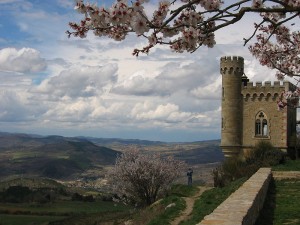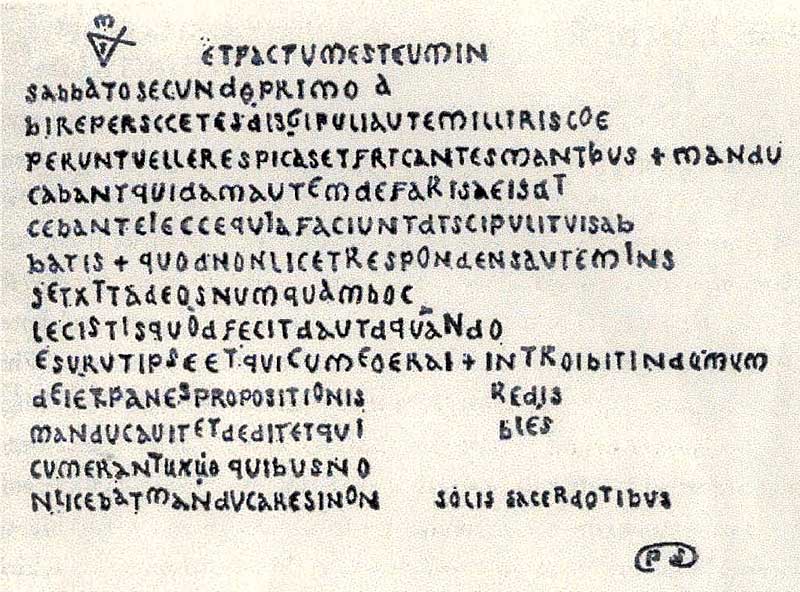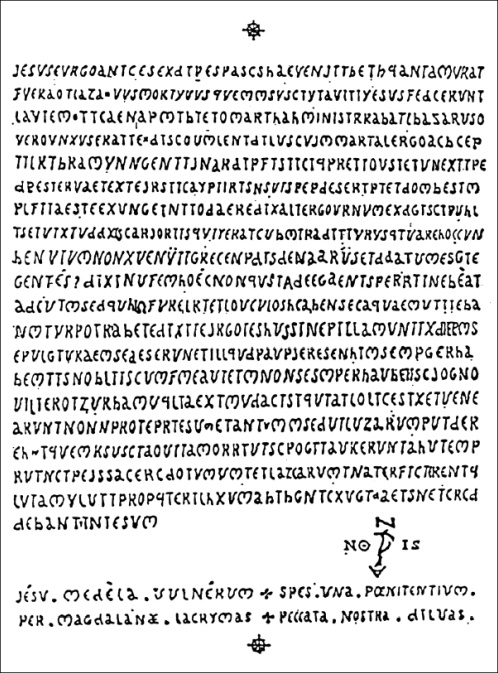 The mystery of Rennes le Chateau is one of many twists and turns. It is a story that involves possible treasure being discovered in the later part of the 19th century by the village priest, Berenger Sauniere. What exactly the treasure was remains a mystery to us today. But what isn’t unknown, and what makes the story so intriguing, is the truth in it. Sauniere spent incredible sums of money that cannot be explained by his meager salary as a priest and side hobbies. It is clear Sauniere found something! But what, is the question? Was it a treasure? Was it something else?
The mystery of Rennes le Chateau is one of many twists and turns. It is a story that involves possible treasure being discovered in the later part of the 19th century by the village priest, Berenger Sauniere. What exactly the treasure was remains a mystery to us today. But what isn’t unknown, and what makes the story so intriguing, is the truth in it. Sauniere spent incredible sums of money that cannot be explained by his meager salary as a priest and side hobbies. It is clear Sauniere found something! But what, is the question? Was it a treasure? Was it something else?
Researching the mystery can uncover more questions than answers. It’s a wild trail. And while many people suspected Sauniere hid secrets during his lifetime (1852-1917), it wasn’t until the mid 1950’s, and later, when the wider public became aware of the mystery and stories of treasure at Rennes le Chateau.
The first of these came from Noel Corbu, who acquired Sauniere’s estate and turned it into a hotel and restaurant in 1955. He began sharing stories of a lost treasure of Rennes le Chateau to gain customers and traffic to the area. The visitors loved the stories for there was a historical basis for his narrative. But then came Gerard de Sede, who had published a book entitled, ‘The Accursed Treasure (of Rennes le Chateau)’ in 1967. This book brought even more attention to Sauniere’s puzzling wealth, and caught the attention of writer Henry Lincoln, who furthered the publicity, in his book, Holy Blood, Holy Grail.
It was within Sede’s book that the story of Sauniere finding parchments hidden beneath the high altar of his church came about. Copies of the mysterious parchments were first published in the book, and it was claimed they were found while Sauniere was renovating his church. Some say these parchments led to Sauniere’s later riches.
So what did the parchments say? Let’s take a look at them. And it’s not so much what they said on the surface, but what was discovered hidden in them, by use of secret codes and ciphers, that has perplexed researchers for the last 50 years.
The parchments are often called the Small and Grand Parchment. Obviously, because of their sizes. Nothing too creative here so far. However, we have only just begun.
Small Parchment:

Grand Parchment:

The Parchments were written in Latin and contained the text from Bible verses.
The small parchment included the parable of corn picked on the Sabbath. It combined three versions: Luke 6:1-5, Matthew 12:1-8, and Mark 2:23-28. The lines of the parchment varied and included a curious triangular like symbol at the top left.
The Grand Parchment included verses from John 12: 1-12 and related the story about Christ visiting Bethany where Martha, Mary Magdalene, and Lazarus lived. It shares the account of Mary Magdalene anointing Jesus. This Parchment contained curious symbols as well, and also consisted of extra letters mixed in with the Bible text.
Both parchments were found to secretly hide curious words and perplexing messages.
The small parchment contained simple anomalies which led to a hidden message. It was noticed certain letters were raised above the rest of the text. These letters, when taken in order, revealed the message:
A DAGOBERT II ROI ET A SION EST CE TRESOR ET IL EST LA MORT
Translated as:
To Dagobert II, King, and to Sion is this treasure and he is there dead
The full meaning of the hidden message remains a mystery. The mention of treasure of course catches everyone’s attention.
The Grand Parchment hid a few more words and messages.
First there were letters below the lines which revealed PANIS and SAL (bread and salt). Interesting that here they are below and not above like the message in the small parchment.
There were also letters which were smaller in size than the others. These letters spelled REX MUNDI, which is Latin for ‘King of the World’.
In addition to the above anomalies, there were 140 letters inserted into the text of the parchment. This string of extra letters was considered complete gibberish, except for 12 letters in the middle. AD GENESARETH was noticed there. This translates to ‘to the Sea of Galilee (Genesareth)’.
The remaining 128 letters remained curious. It was later discovered they could be decoded to reveal a most unusual and suspicious message. It is as follows (translated):
SHEPHERDESS NO TEMPATATION THAT POUSSIN TENIERS HOLD THE KEY PEACE 681 BY THE CROSS AND THIS HORSE OF GOD I COMPLETE THIS GUARDIAN AT MIDDAY BLUE APPLES
What does the message mean? Let’s look how is was decoded first. It is a complicated process and clearly couldn’t be done without some knowledge of how it was encoded. Which makes the message extremely suspicious and supports those who feel it is all part of an elaborate hoax. (However, it should be added, while the parchments themselves may be a hoax, maybe the messages are not. They could have been discovered another way, and then reproduced within the parchments).
The first step of how to decode the 128 string of letters of:
VCPSJQROVYMYYDLTPEFRBOXTODJLBKNJFQUEPAJYNPP
BFEIELRGHIIRYBTTCVTGDLUCCVMTEJHPNPGSVQJHGML
FTSVJLZQMTOXANPEMUPHKORPKHVJCMCATLVQXGGNDT
is as follows:
These letters first need to be put through a Vigenere Cipher. This is a polyalphabetic cipher which requires a keyword to decode. The keyword used is Mort Epee (Death Sword). This keyword was found by realizing the curious letters on the headstone of Marie de Negre d’Ables. The anomalous letters spelled out Mort Epee.
This is not enough, however. The resulting letters from that process then had to be put through the Vigenere Cipher again using another keyword. This time the keyword was the text from Marie de Negre d’Ables entire tombstone (119 letters), and then another 9 letters from an additional stone on her grave.
THE KEYWORD WAS ALSO APPLIED BACKWARDS!
Again, not enough. The letters resulting from this process needed to then be reordered using two checkerboards (64 spaces on each to total 128) and organized via the Knight’s Tour.
A bit overkill, to say the least.
This whole entire multilayered process finally revealed the hidden message:
SHEPHERDESS NO TEMPATATION THAT POUSSIN TENIERS HOLD THE KEY PEACE 681 BY THE CROSS AND THIS HORSE OF GOD I COMPLETE THIS GUARDIAN AT MIDDAY BLUE APPLES
The incredibly complicated and convoluted process could not have been solved without guidance. The original 128 letters picked out of the text on the Grand Parchment could never have been decoded without knowing the process, or some confirmation along the way. There are simply too many options for anyone to apply.
It is also interesting to note, that even after all that decoding, the message itself is so obscure. The meaning is elusive and needs ‘decoded’ itself (as in understanding it’s intention).
Why was so much work placed in the encoding when the message itself remains cryptic enough?
It causes a person to question whether the method of encoding is also part of the ‘hidden secret’. Do clues lie in the encoding process: the Vigenere ciphers, keywords, reversals, Knight’s Tour?
It is possible.
The mystery continues. The final meaning to both messages from the parchment remain unknown. Sure there have been many theories put forth, but none have conclusively been agreed upon by all.
Looking into those theories is for another time. And looking into the curious markings, layout, and symbols on the parchment must also be for another time. As of now, let’s just digest the codes and ciphers of the parchment, and the mysterious messages they produced.
Small Parchment:
To Dagobert II, King, and to Sion is this treasure and he is there dead
Grand Parchment:
SHEPHERDESS NO TEMPATATION THAT POUSSIN TENIERS HOLD THE KEY PEACE 681 BY THE CROSS AND THIS HORSE OF GOD I COMPLETE THIS GUARDIAN AT MIDDAY BLUE APPLES
More research into RLC coming.
Best of luck with all that you seek! Always Treasure the Adventure!

Very interesting
The treasure that Berenguer Sauniere discovered is properly known as King Dagobert’s Gold. Locating it came about, not by reading the hidden text in the Parchments, but by the Priest understanding the symbols. He realised the symbol on Parchment 2 was a monogram and read ‘N Povsin’ (Nicolas Poussin) – He also saw the symbol on the top of P1, the ‘triangle with tails’, could be drawn through the heads of the Shepherds on Poussin’s 1638 ‘Arcadian’ Shepherds painting. He noted the second shepherd was pointing at the letter ‘R’ on the tomb inscription (followed by the ‘C’) in the word ARCADIA …. R-le-C – the first Shepherd. The heads of the Shepherds are hills, the painting is a map (see French map 2347 Quillan Alet-les-Bains). The second shepherd is the low hill Bois du Lauzet, the 3rd is the hill Auriol and the tall shepherdess is the high hill Cardou (end of upper tail). A line drawn from R-le-C through Auriol heads straight for Rennes les Bains (the lower tail). The symbol on P2 also names the place of the Treasure. Check the map on Google Earth.
Geoffrey
I’m the last Grand master of the, PRIORY OF SION. When the writer explains SION is a code abbreviation for the street address, STATION. Take TAT from STATION, leaves SION. All religious scholars know, the PROVOST is the Grand Master of all PRIORY, that is the name that the writer attended school under and Station is my street address. The Les dossier secret parchments, are a Map Dot Dash Code for the writes Grandfather’s home address. Author Dan Brown named the lead character played by Actor Tom Hanks, Religious Professor Robert Langdon after my grandfather Robert Provost, and scholars will tell you, Professor is a definition for Provost. At line eleven of the Les Dossier small parchment bracked by the elevated letter S and raised O the Latin work, plural for Provost is written in English letters, being PROPOSITI. Ware the abbreviation code for SION is seen starting at the end of the line, with the dot S going north to south. The eleventh line this is the code for the eleven children born to wife Mary at the Sion street address. The M with numeral 1 within the Grail symbol at the top of the page at the beginning of line 1, represent the first of the eleven children born at her station street home.